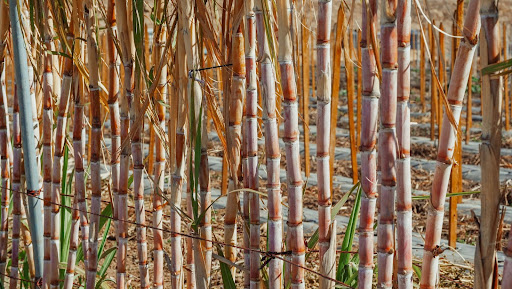People researching beet sugar vs cane sugar often want to know which blends well in liquids.
Discover the Uses and Advantages of Beet Sugar Vs Cane Sugar in Your Daily Diet Plan
Discovering the distinctive qualities of beet and cane sugar reveals greater than just their sweetening abilities; it highlights their special influences on wellness and cookeries. Beet sugar, known for its subtle taste, is typically favored in delicate desserts, whereas cane sugar, with its hint of molasses, adds splendor to durable recipes. Each kind holds its very own dietary account and glycemic effects, welcoming a much deeper understanding of their roles in a balanced diet plan and lasting intake techniques.
Beginning and Production Processes of Beet and Cane Sugar

The unique environments and soil types required for growing sugar beetroots and sugarcane contribute to distinctions in their growing methods and geographical distribution, affecting the business economics and sustainability of their manufacturing. beet sugar vs cane sugar.
Nutritional Contrast In Between Beet Sugar and Cane Sugar
Regardless of originating from various plants, beet sugar and cane sugar are nutritionally extremely similar, both mainly including sucrose. Each supplies concerning 4 calories per gram, equating to about 16 calories per teaspoon. Structurally, both sugars are made up of around 99.95% sucrose, with very little quantities of other substances like moisture and trace element, which do not significantly change their dietary accounts.

Ultimately, when picking in between beet sugar and cane sugar based upon nutritional web content alone, both offer similar advantages and disadvantages as they are basically forms of the same particle-- sucrose, providing quick energy without other nutrients.
Influence On Health And Wellness: Glycemic Index and Caloric Content
Checking out further into the impacts of beet sugar and cane look what i found sugar on health and wellness, it is essential to consider their glycemic index and calorie content. The glycemic index (GI) of both beet and cane sugar is around 65, classifying them as high-GI foods, which can cause quick spikes in blood glucose levels.
Each sort of sugar has around 4 calories per gram, making their caloric material equivalent. For those checking calorie consumption, specifically when handling weight or metabolic health and wellness conditions, recognizing this equivalence is crucial (beet sugar vs cane sugar). However, extreme consumption of any high-calorie, high-GI food can add to health and wellness concerns such as excessive weight, cardiovascular disease, and insulin resistance.
Environmental and Economic Factors To Consider of Sugar Production
Beyond wellness influences, the manufacturing of beet and cane sugar additionally raises considerable ecological and economic problems. Sugar beet cultivation tends to need cooler Recommended Site environments and has a reduced geographical footprint contrasted to sugar cane, which grows in tropical areas.
In addition, making use of chemicals and plant foods in both beet and cane sugar cultivation can result in soil destruction and air pollution, further impacting biodiversity and neighborhood water bodies (beet sugar vs cane sugar). The choice in between cultivating sugar beet or cane often hinges on local environmental conditions and economic variables, making the sustainability of sugar manufacturing an intricate problem
Culinary Applications and Flavor Distinctions
While the ecological and economic facets of sugar production are indeed substantial, the choice in between beet and cane sugar additionally influences culinary applications and flavor profiles. Beet sugar, acquired from the sugar beet plant, is known for its extremely neutral preference. This makes it a flexible ingredient in cooking, where it does not alter the flavor of other parts. It dissolves promptly and is optimal for usage in cakes, cookies, and breads.
Walking stick sugar, removed from sugarcane, often preserves molasses traces, which impart a distinctive splendor and depth. This slight my latest blog post molasses taste boosts the intricacy of baked products, sauces, and marinades. It is especially favored in things where a caramel undertone is wanted, such as in brownies or gingerbread. The small variant in dampness content in between beet and cane sugar can impact the structure and consistency of recipes, making cane sugar a recommended option for certain recipes that benefit from its unique residential or commercial properties.

Final Thought
Finally, both beet and cane sugar have distinctive beginnings and production procedures, providing similar nutritional profiles with mild distinctions in sodium content and taste. While their influence on wellness, especially concerning glycemic index and calories, is similar, the selection in between them commonly boils down to ecological, financial aspects, and particular cooking needs. Understanding these facets can lead consumers in making educated decisions that align with their health goals and flavor preferences.